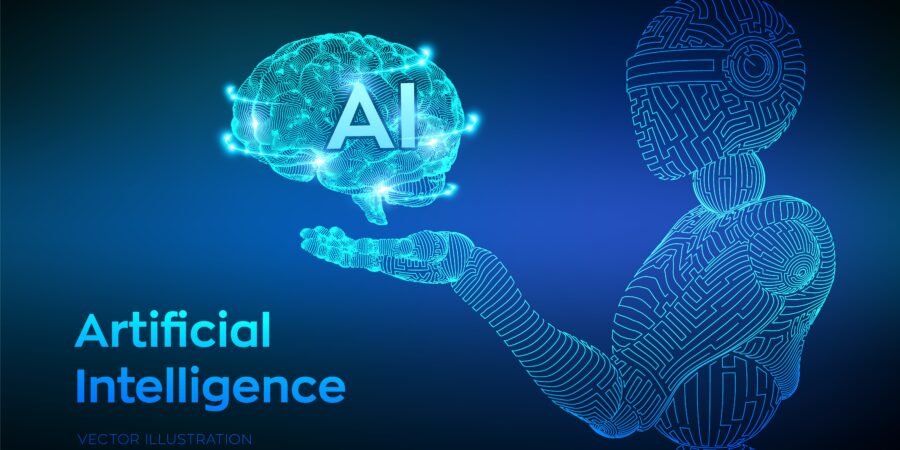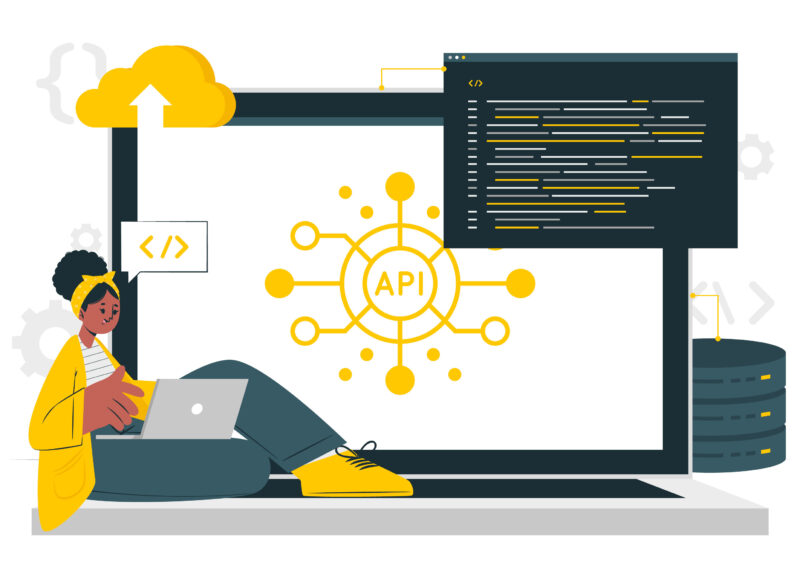Artificial intelligence (AI) is a transformative field within computer science focused on developing machines that simulate human-like intelligence. By employing complex algorithms and large datasets, AI systems can perform tasks such as language understanding, pattern recognition, problem-solving, and decision-making. These systems continuously learn from new data, adapting to improve their performance over time.
AI is typically categorized into two main types. Narrow AI, or Weak AI, is designed to handle specific tasks, like voice recognition or search engine recommendations. It excels within its domain but lacks broader understanding. General AI, or Strong AI, is a theoretical concept where a machine would possess the capability to perform any intellectual task a human could do, with reasoning, problem-solving, and adaptation across various contexts. While general AI remains largely theoretical, narrow AI is already widely used in fields such as healthcare, finance, and entertainment, reshaping industries and enhancing productivity.
Machine learning, a subset of AI, uses statistical techniques to enable machines to improve with experience, relying on data rather than explicit programming. Deep learning, a more advanced form of machine learning, uses neural networks with multiple layers to analyze data in more complex ways, especially in image and speech recognition. With ongoing advancements, AI has the potential to impact virtually every industry and redefine the future of work and daily life, while also raising ethical questions around privacy, job displacement, and decision-making transparency.
Topics of Course
-
1.1 – Introduction to Artificial Intelligence
-
1.2 – What is Artificial Intelligence?
-
1.3 – Brief History of AI
-
1.4 – Fundamental Concepts of AI
-
1.5 – Machine Learning and Deep Learning
-
1.6 – Supervised, unsupervised and Reinforcement Learning
-
1.7 – Applications of AI in various Industries
-
1.8 – Challenges and Limitations of AI
-
1.9 – Ethical considerations in AI
-
1.10 – Future trends and Advancements in AI
-
2.1 – History and Evolution of AI
-
2.2 – Early pioneers of AI
-
2.3 – The Birth of AI
-
2.4 – The Raise and Fall of AI
-
2.5 – The AI Winter
-
2.6 – The Resurgence of AI
-
2.7 – The modern AI Era
-
2.8 – The impact of Deep Learning
-
2.9 – Current Advancements in AI
-
2.10 – The future of AI
-
3.1 – Key concepts and terminology in Al
-
3.2 – What is AI?
-
3.3 – Machine Learning
-
3.4 – Deep Learning
-
3.5 – Natural Language Processing
-
3.6 – Computer Vision
-
3.7 – Robotics
-
3.8 – Reinforcement Learning
-
3.9 – Ethical Considerations in AI
-
3.10 – Current Applications of AI
-
4.1 – Introduction to Machine Learning in AI
-
4.2 – What is AI?
-
4.3 – Fundamental of Machine Learning
-
4.4 – Supervised Learning Algorithms
-
4.5 – Unsupervised Learning Algorithms
-
4.6 – Reinforcement Learning Algorithms
-
4.7 – Data Preprocessing and Feature Engineering
-
4.8 – Model selection and Evaluation
-
4.9 – Real-world Applications of Machine Learning
-
4.10 – Future Trends and Challenges in ML and AI
-
5.1 – Introduction to neural Networks
-
5.2 – What are Neural Networks?
-
5.3 – Biological Inspiration
-
5.4 – Perceptron and Activation Functions
-
5.5 – Feedforward Neural Networks
-
5.6 – Backpropagation Algorithm
-
5.7 – Hyperparameters and Optimization
-
5.8 – Convolution Neural Networks
-
5.9 – Recurrent Neural Networks
-
5.10 – Applications and Limitations of Neural Networks
-
6.1 – AI in Natural Language Processing (NLP)
-
6.2 – Overview of NLP and its Applications
-
6.3 – Fundamentals of Language Understanding
-
6.4 – Machine Learning Techniques in NLP
-
6.5 – Challenges in NLP and How AI Can Help
-
6.6 – Natural Language Generation (NLG) and Its Use Cases
-
6.7 – Sentiment Analysis and Emotion Recognition
-
6.8 – Conversational AI and Chatbots
-
6.9 – Ethical Considerations in AI-Powered NLP
-
6.10 – Future Trends and Advancements in AI for NLP
-
7.1 – AI in Computer Vision
-
7.2 – Overview of Computer Vision
-
7.3 – Fundamentals of AI
-
7.4 – Machine Learning in Computer Vision
-
7.5 – Deep Learning Techniques
-
7.6 – Object Detection and Recognition
-
7.7 – Image Classification and Segmentation
-
7.8 – Applications of AI in Computer Vision
-
7.9 – Challenges and Limitations
-
7.10 – Conclusion and Future Trends
-
8.1 – Introduction to Ethical Considerations in AI
-
8.2 – What is Artificial Intelligence?
-
8.3 – Potential Risks and Challenges of AI
-
8.4 – Bias and Fairness in AI Systems
-
8.5 – Privacy and Data Protection in AI
-
8.6 – Transparency and Accountability in AI
-
8.7 – Ethical Frameworks for AI Development
-
8.8 – AI and Human Rights
-
8.9 – Case Studies: Ethical Dilemmas in AI
-
8.10 – Conclusion and Recommendations
-
9.1 -Introduction to AI Applications in Real-World Scenarios
-
9.2 -Defining Artificial Intelligence
-
9.3 – AI in Healthcare
-
9.4 – AI in Transportation
-
9.5 – AI in Finance
-
9.6 – AI in Retail
-
9.7 – AI in Manufacturing
-
9.8 – AI in Cybersecurity
-
9.9 – Ethical Considerations in AI
-
9.10 – Future Trends and Opportunities in AI
-
10.1 – Future Trends in AI
-
10.2 – Advancements in Deep Learning
-
10.3 – Emergence of Generative AI
-
10.4 – Quantum Computing and AI
-
10.5 – Ethical Considerations in AI
-
10.6 – AI and the Future of Work
-
10.7 – AI-Powered Autonomous Systems
-
10.8 – Personalized AI Assistants
-
10.9 – AI and the Environment
-
10.10 -The Singularity and Beyond




